Succulents have become increasingly popular in recent years, and it’s no wonder why. These unique plants are not only visually appealing with their vibrant colors and interesting shapes, but they also require minimal care and can thrive in a variety of environments. However, despite their reputation for being low-maintenance, proper care is still essential to ensure the health and longevity of your succulents.
Understanding the Basics of Succulent Care
Succulents are a type of plant that store water in their leaves, stems, or roots, allowing them to survive in arid conditions. Their ability to retain water makes them well-suited for dry climates and indoor environments with low humidity. Succulents come in a wide variety of shapes and sizes, from the popular Echeveria and Aloe vera to the more unique Haworthia and Crassula.
To ensure the health of your succulents, it’s important to provide them with the ideal growing conditions. Succulents thrive in well-draining soil that allows excess water to escape quickly, preventing root rot. They also require plenty of sunlight, at least six hours a day, to promote healthy growth. Additionally, succulents prefer temperatures between 60-80°F (15-27°C) and can tolerate cooler temperatures at night.
Choosing the Right Soil for Your Succulents
One of the most important aspects of succulent care is choosing the right soil. Succulents require well-draining soil that allows water to flow through easily, preventing excess moisture from sitting around the roots. This is because succulents are prone to root rot if they are constantly sitting in wet soil.
There are several types of soil that are suitable for succulents. One option is a cactus or succulent potting mix, which is specifically formulated to provide the ideal growing conditions for these plants. Another option is to make your own succulent soil mix by combining equal parts of regular potting soil, coarse sand, and perlite or pumice. This DIY mix allows for excellent drainage while still providing the necessary nutrients for your succulents.
Watering Your Succulents: Dos and Don’ts
Proper watering is crucial for the health of your succulents. While it may be tempting to water them frequently, succulents actually prefer to be slightly underwatered rather than overwatered. Overwatering can lead to root rot and other issues, so it’s important to find the right balance.
The frequency of watering will depend on various factors such as the type of succulent, the size of the pot, and the environmental conditions. As a general rule, it’s best to wait until the soil is completely dry before watering again. To determine if your succulent needs water, you can stick your finger about an inch into the soil. If it feels dry, it’s time to water.
When watering your succulents, it’s important to use the soak and dry method. This means thoroughly watering the soil until water drains out of the bottom of the pot, and then allowing the soil to dry out completely before watering again. This method ensures that the roots receive enough water without sitting in wet soil for extended periods.
The Importance of Sunlight for Succulent Growth
Succulents are sun-loving plants that require plenty of sunlight to thrive. In fact, they need at least six hours of direct sunlight each day to maintain their vibrant colors and compact growth. Without enough sunlight, succulents can become stretched out and leggy.
When it comes to placement, it’s best to position your succulents near a south or west-facing window where they can receive ample sunlight throughout the day. If you don’t have access to natural sunlight, you can also use artificial grow lights to provide the necessary light for your succulents.
It’s important to note that while succulents love sunlight, they can also be susceptible to sunburn if exposed to intense, direct sunlight for extended periods. Signs of sunburn include brown or white patches on the leaves. If you notice these signs, it’s best to move your succulent to a slightly shadier location.
Fertilizing Your Succulents: When and How
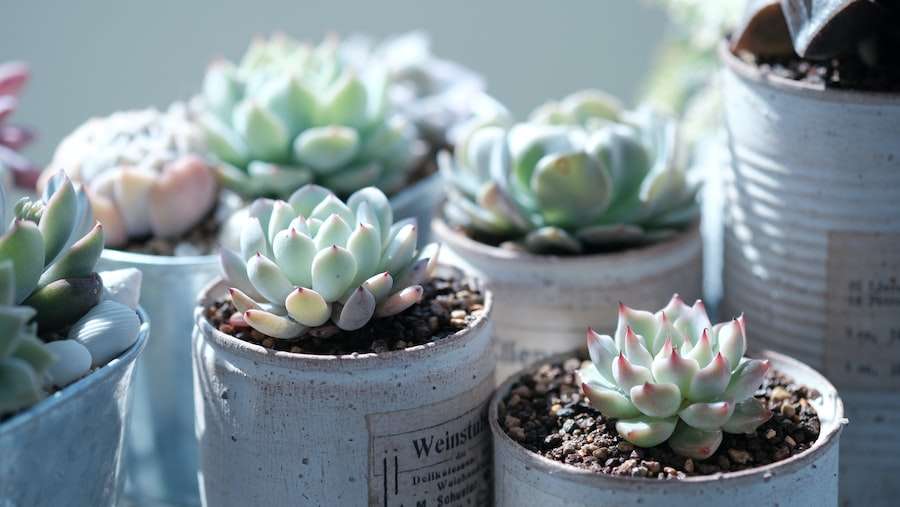
While succulents are known for their ability to thrive in nutrient-poor environments, they still benefit from occasional fertilization. Fertilizing your succulents can help promote healthy growth and vibrant colors.
When it comes to choosing a fertilizer, it’s best to opt for a balanced, water-soluble fertilizer specifically formulated for succulents. These fertilizers typically have an NPK ratio of 2-7-7 or similar, which means they contain a balanced amount of nitrogen, phosphorus, and potassium.
It’s important not to over-fertilize your succulents, as this can lead to nutrient burn and other issues. As a general rule, it’s best to fertilize your succulents once every two to four weeks during the growing season (spring and summer) and reduce or stop fertilizing during the dormant season (fall and winter).
When applying fertilizer, it’s important to dilute it according to the instructions on the packaging. It’s also best to apply the fertilizer to damp soil rather than dry soil to prevent burning the roots.
Repotting Your Succulents: Tips and Tricks
Succulents generally don’t require frequent repotting, but there are certain signs that indicate it may be time to repot your plant. These signs include roots growing out of the drainage holes, the plant becoming top-heavy and tipping over, or the soil drying out very quickly after watering.
The best time to repot your succulent is during the spring or summer when the plant is actively growing. Before repotting, make sure to choose a pot that is slightly larger than the current one and has drainage holes to prevent water from pooling around the roots.
To repot your succulent, gently remove it from its current pot and shake off any excess soil. Inspect the roots for any signs of rot or damage and trim them if necessary. Place the succulent in the new pot and fill in the gaps with fresh succulent soil mix. Allow the plant to settle in its new pot for a few days before watering.
Preventing and Treating Common Succulent Pests and Diseases
Like any other plant, succulents can be susceptible to pests and diseases. Some common pests that affect succulents include mealybugs, aphids, and spider mites. These pests can cause damage to the leaves and stems of your succulents if left untreated.
To prevent pest infestations, it’s important to regularly inspect your succulents for any signs of pests. If you do notice pests, you can try using natural remedies such as neem oil or insecticidal soap to control the infestation. It’s important to follow the instructions on the packaging and apply these remedies as directed.
In addition to pests, succulents can also be prone to diseases such as root rot and fungal infections. To prevent these issues, it’s important to provide proper drainage and avoid overwatering your succulents. If you do notice signs of disease, such as black spots or mushy leaves, it’s best to remove the affected parts of the plant and treat it with a fungicide if necessary.
Propagating Succulents: Methods and Techniques
One of the great things about succulents is their ability to propagate easily. Propagation is the process of creating new plants from existing ones, and there are several methods you can use to propagate your succulents.
One common method of propagation is leaf propagation, which involves removing a healthy leaf from the parent plant and allowing it to develop roots and eventually grow into a new plant. Another method is stem cutting, where you cut a healthy stem from the parent plant and allow it to callus over before planting it in soil.
The best time to propagate succulents is during the spring or summer when the plants are actively growing. It’s important to use a well-draining soil mix and provide the new plants with plenty of sunlight and water until they establish roots.
Creating Beautiful Succulent Arrangements
Succulents are not only beautiful on their own, but they also make stunning additions to arrangements and displays. Whether you’re creating a small centerpiece for your dining table or a large arrangement for your outdoor patio, there are endless possibilities when it comes to succulent arrangements.
When creating succulent arrangements, it’s important to choose the right container. Succulents prefer containers with drainage holes to prevent water from pooling around the roots. You can also get creative with your containers by using unique items such as teacups, mason jars, or even old shoes.
When arranging your succulents, it’s best to start with a focal point plant and then add smaller plants around it. You can play around with different colors, textures, and heights to create a visually appealing arrangement. It’s also important to leave enough space between the plants to allow for growth and airflow.
Frequently Asked Questions About Succulent Care
Q: How often should I water my succulents?
A: The frequency of watering will depend on various factors such as the type of succulent, the size of the pot, and the environmental conditions. As a general rule, it’s best to wait until the soil is completely dry before watering again.
Q: How much sunlight do succulents need?
A: Succulents need at least six hours of direct sunlight each day to maintain their vibrant colors and compact growth. If you don’t have access to natural sunlight, you can also use artificial grow lights to provide the necessary light for your succulents.
Q: How do I prevent pests from infesting my succulents?
A: To prevent pest infestations, it’s important to regularly inspect your succulents for any signs of pests. If you do notice pests, you can try using natural remedies such as neem oil or insecticidal soap to control the infestation.
Proper care is essential for the health and longevity of your succulents. By understanding the basics of succulent care, choosing the right soil, watering correctly, providing adequate sunlight, fertilizing appropriately, repotting when necessary, preventing and treating pests and diseases, propagating successfully, and creating beautiful arrangements, you can ensure that your succulents thrive in any environment. So go ahead and give succulent care a try – you’ll be rewarded with beautiful, low-maintenance plants that bring a touch of nature into your home or garden.
If you’re interested in learning more about succulent care, you may also want to check out this related article on GirlsGist: “Do Succulents Attract Bugs? The Truth About Insect Infestations in Your Indoor Garden.” This informative piece explores the common concern of bugs and pests in succulent gardens and provides insights on how to prevent and address insect infestations. Understanding the potential challenges that come with succulent care is essential for maintaining healthy and thriving plants. So, click here to read the full article and gain valuable knowledge on keeping your succulents bug-free: https://girlsgist.com/fun-stuff/do-succulents-attract-bugs-the-truth-about-insect-infestations-in-your-indoor-garden/.
FAQs
What are succulents?
Succulents are plants that store water in their leaves, stems, and roots. They come in a variety of shapes, sizes, and colors and are known for their ability to thrive in dry and arid conditions.
How do I care for succulents?
Succulents require minimal care, but there are a few things to keep in mind. They need well-draining soil, plenty of sunlight, and infrequent watering. Overwatering can lead to root rot, so it’s important to let the soil dry out completely between waterings.
What kind of soil do succulents need?
Succulents need soil that is well-draining and porous. A mix of potting soil, sand, and perlite is a good option. Avoid using heavy soils that retain moisture, as this can lead to root rot.
How much sunlight do succulents need?
Most succulents need at least six hours of sunlight per day. However, some varieties can tolerate partial shade. It’s important to monitor your succulents and adjust their placement accordingly.
How often should I water my succulents?
Succulents should be watered infrequently, as they are adapted to dry conditions. Water them only when the soil is completely dry, and be sure to allow excess water to drain away. Overwatering can lead to root rot and other problems.
Can succulents be grown indoors?
Yes, many succulents can be grown indoors. They require bright, indirect sunlight and well-draining soil. It’s important to monitor their water needs and adjust their placement as needed to ensure they receive enough light.
What are some common problems with succulents?
Common problems with succulents include overwatering, underwatering, pests, and diseases. It’s important to monitor your plants and address any issues promptly to ensure their health and longevity.








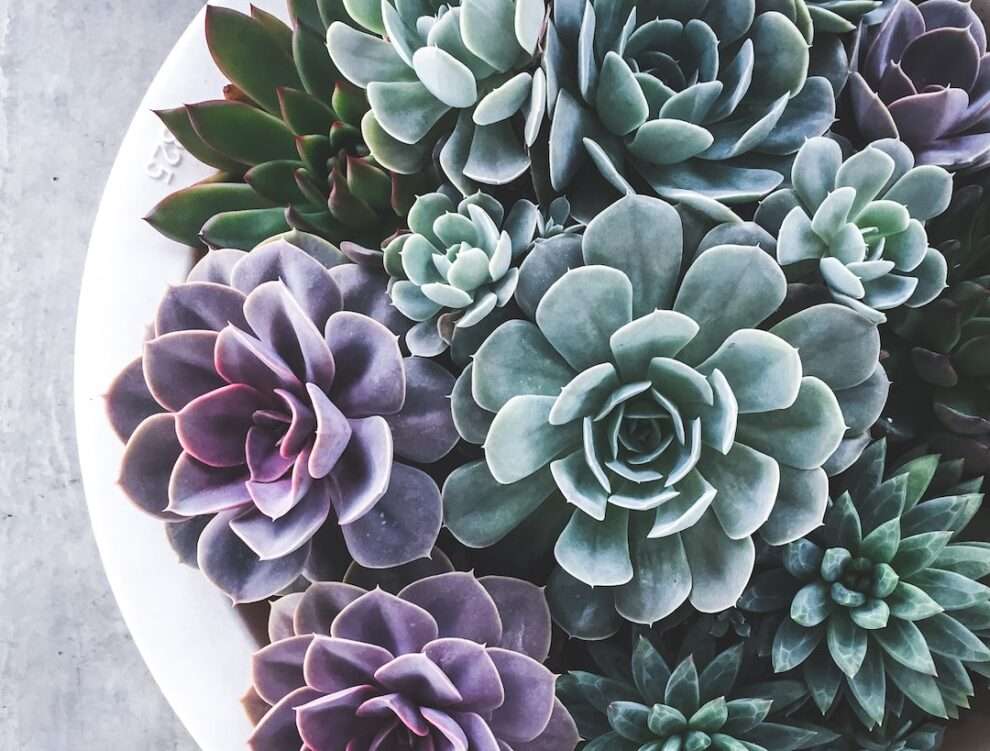
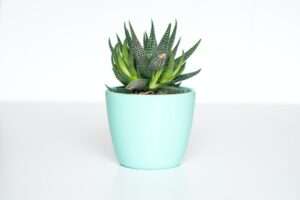
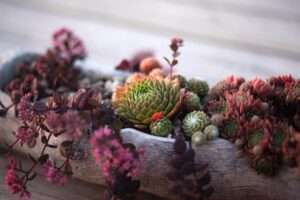





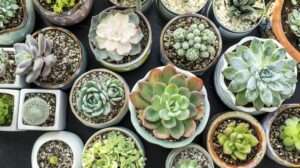
Add Comment